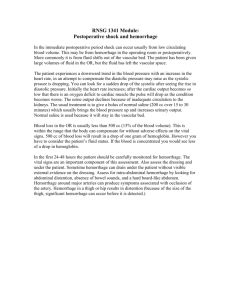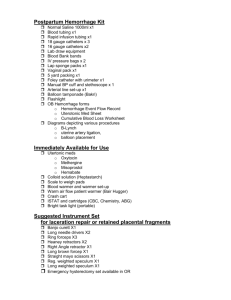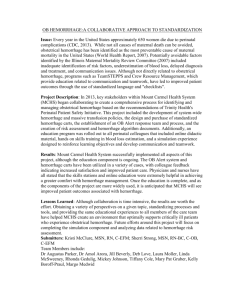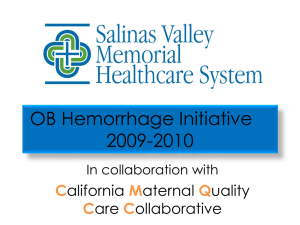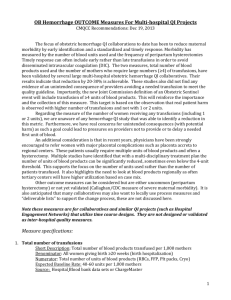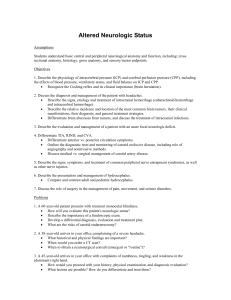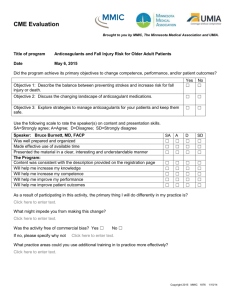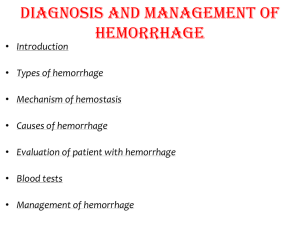Sample Action Plan Template
advertisement
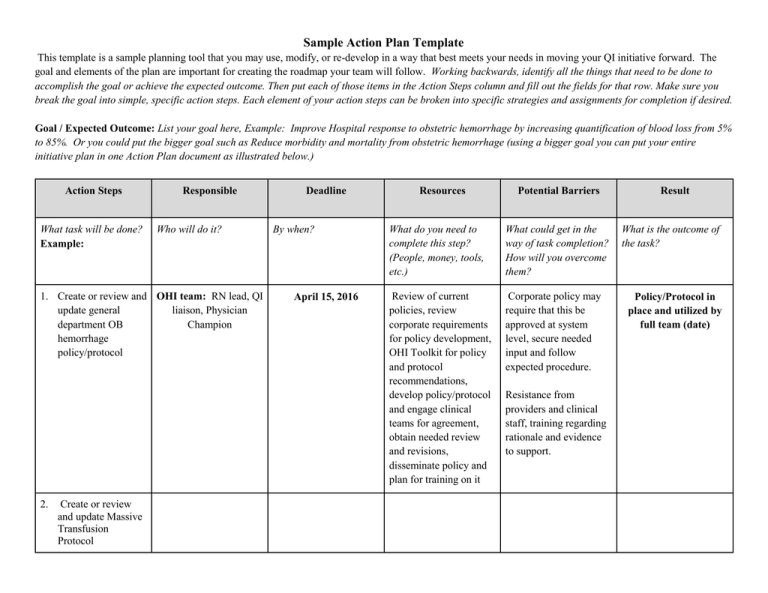
Sample Action Plan Template This template is a sample planning tool that you may use, modify, or re-develop in a way that best meets your needs in moving your QI initiative forward. The goal and elements of the plan are important for creating the roadmap your team will follow. Working backwards, identify all the things that need to be done to accomplish the goal or achieve the expected outcome. Then put each of those items in the Action Steps column and fill out the fields for that row. Make sure you break the goal into simple, specific action steps. Each element of your action steps can be broken into specific strategies and assignments for completion if desired. Goal / Expected Outcome: List your goal here, Example: Improve Hospital response to obstetric hemorrhage by increasing quantification of blood loss from 5% to 85%. Or you could put the bigger goal such as Reduce morbidity and mortality from obstetric hemorrhage (using a bigger goal you can put your entire initiative plan in one Action Plan document as illustrated below.) Action Steps What task will be done? Example: Responsible Who will do it? 1. Create or review and OHI team: RN lead, QI update general liaison, Physician department OB Champion hemorrhage policy/protocol 2. Create or review and update Massive Transfusion Protocol Deadline By when? April 15, 2016 Resources Potential Barriers What do you need to complete this step? (People, money, tools, etc.) What could get in the way of task completion? How will you overcome them? Review of current policies, review corporate requirements for policy development, OHI Toolkit for policy and protocol recommendations, develop policy/protocol and engage clinical teams for agreement, obtain needed review and revisions, disseminate policy and plan for training on it Corporate policy may require that this be approved at system level, secure needed input and follow expected procedure. Resistance from providers and clinical staff, training regarding rationale and evidence to support. Result What is the outcome of the task? Policy/Protocol in place and utilized by full team (date) 3. Begin to track data so you can plan change and track progress (PDSA cycles) 4. Educate and train staff on your new protocols, procedures, and skills 5. Develop a system to assess women for risk of hemorrhage on birth admission 6. Create an on-unit hemorrhage cart with medications and tools 7. Begin to quantify blood loss (start with low-risk vaginal deliveries or scheduled cesarean deliveries) 8. Hold regular meetings to review progress with your team and obtain feedback 9. Devise system (e.g. EMR) to track documentation of active management of labor, QBL, risk assessment score 10. Run drills tailored to your hospital’s procedures and responder roles 11. Institute a system to debrief after all major hemorrhage events 12. Celebrate successes and make change sustainable!

